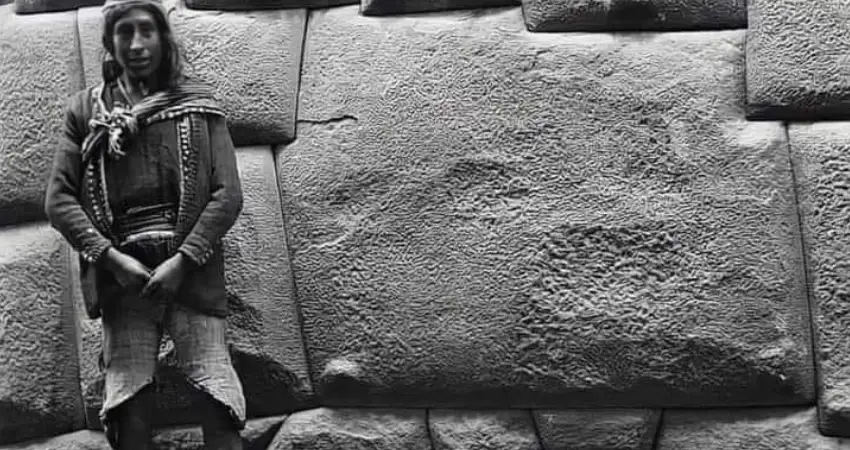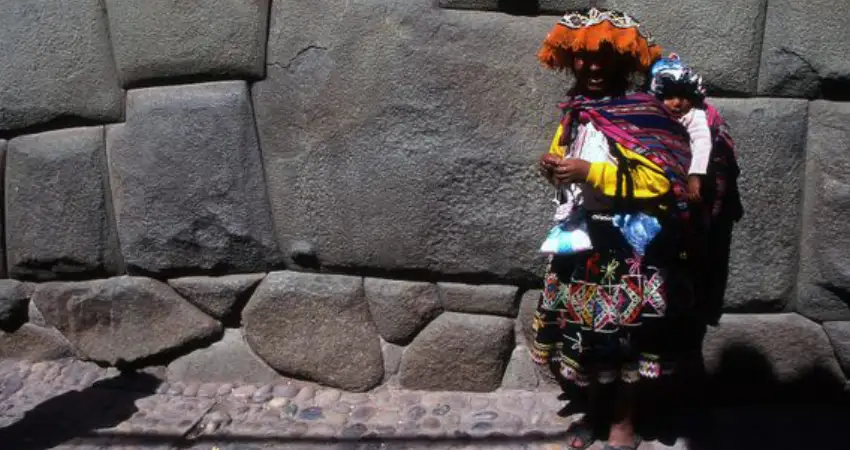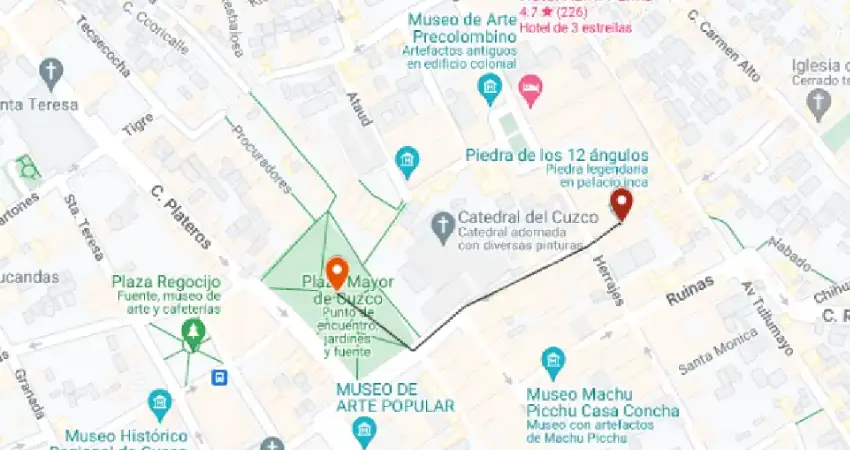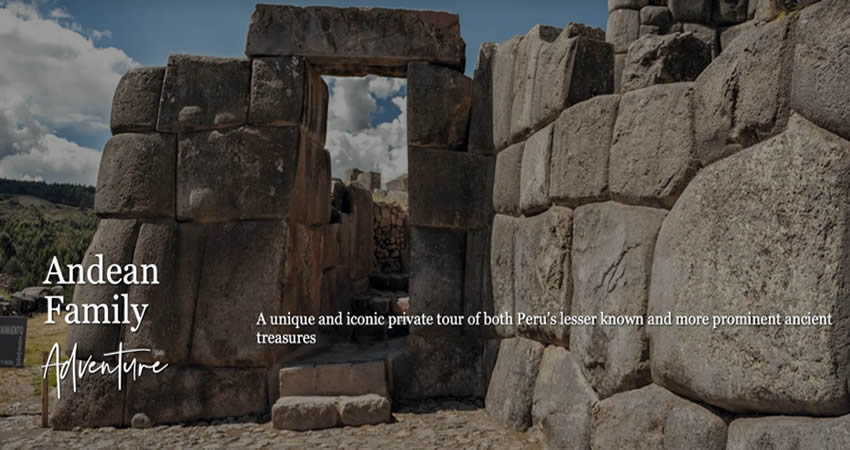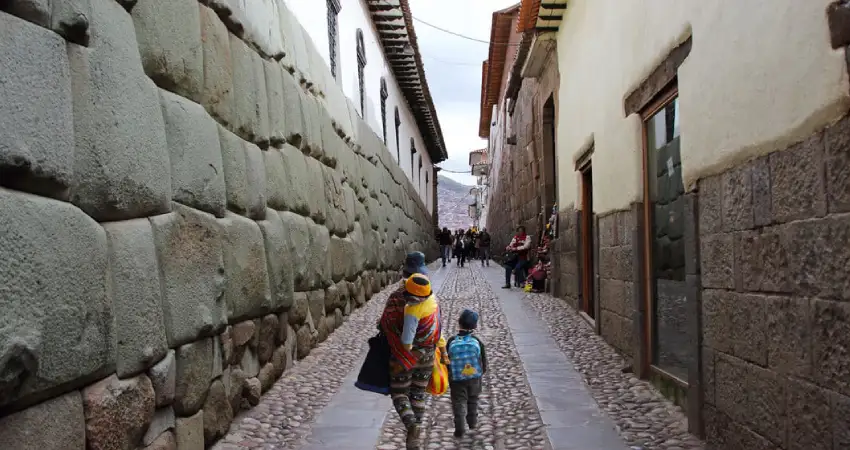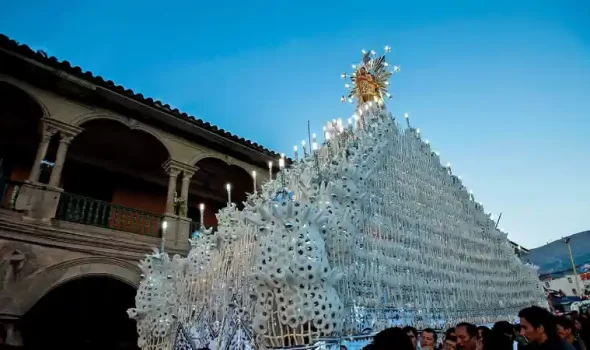1.- OVERVIEW OF THE 12 ANGLED STONE OF CUSCO
The 12 angled Stone of Cusco located on Hatunrumiyoc Street in Cusco is one of the most significant examples of the architectural skill that an Inca culture had during its development, what makes it very particular and unique compared to the rest of the rocks in the same place is undoubtedly that the 12 angled Stone of Cusco has 12 corners that fit perfectly with a wall in which it is located, it is estimated that the 12 angled Stone of Cusco is around 700 years old and was placed during the development of the city.
The 12 angled Stone of Cusco is made of igneous rock (green diorite) and is at least six feet deep. This makes it one of the largest rocks in the entire place and it is estimated that it weighs at least 6 tons, many historians have determined that behind the 12 angled Stone of Cusco there is a meaning of the Andean worldview, it represents the division of 24 families, 12 families belonging to the Hurin dynasty and 12 families to the Hanan dynasty.
The wall where the 12 angled Stone of Cusco is located was originally part of the Inca rock palace, however with the arrival of the Spanish and the imposition of the Catholic Church it became part of the archiepiscopal palace where the domain of the Diocesan order was established, who are responsible for safeguarding the treasures and secrets of the cathedral.
| “You don’t always need a plan, sometimes you just need to breathe, trust, let go, and see what happens.” |
2.- BRIEF HISTORY ABOUT THE 12 ANGLED STONE OF CUSCO
One of the most representative figures of the Andean culture is undoubtedly the Cusco Stone of 12 angles, to the point that it has been considered as a symbol of cultural identification for which many people living in the city of Cusco are proud, it has also become a historical and cultural element of which many travelers from around the world intend to visit. The 12 angled Stone of Cusco is undoubtedly a sample of the high architectural level that the culture had, even to be able to mold the stones to their liking, although now survived in time the history that surrounds the 12 angled Stone of Cusco is a little confusing since it is only known that it belonged to an Inca palace and later when the Spaniards arrived it was part of a colonial mansion and eventually became the museum of religious art and at the same time the archbishop’s palace so it was kept in the same place to show the overlap of power between European and Andean culture.
3.- HOW TO GET AND WHEN TO VISIT THE 12 ANGLED STONE OF CUSCO
The Cusco Stone of 12 angles is located in the middle of Hatunrumiyoc street quite close to the main square of Cusco and to get here is quite easy, starting from the main square you go first down the street of triumph until you reach the back corner where the main door of the archbishop’s palace of Cusco is located, you must continue straight ahead and still a few steps you will see the incredible and immense Cusco Stone of 12 angles on the right side, it is 1 m high and 1.20 m long. The nice thing about this place is that it is available for visitors 24 hours a day, seven days a week, so you can visit it at any time of the day and you do not need to pay to appreciate the 12 angled Stone of Cusco because it is in the middle of the pedestrian street where you can walk freely.
4.- HELP US PRESERVE HISTORY
“Something that many people do not know is that through our hands we also emit sweat, this contains a type of acid that when in contact with surfaces such as rocks can cause them to decalcify over time and begin to peel, for this reason it is extremely important that when you visit an archaeological site do not touch the walls, it helps to preserve the history for future generations to know it.”
5.- FAQs ABOUT THE 12 ANGLED STONE CUSCO
- What type of stone was used to create the 12 Angled Stone?
Many of the constructions of Inca origin that can be found within the city of Cusco have in common that they were brought from various quarries around the city, in the case of the 12 angled Stone of Cusco it was also like this and green diorite igneous rock was used for the construction because when working or molding it it was easier.
- How heavy is the 12 Angled Stone?
Although it is not entirely certain, it is believed that the 12 angled Stone of Cusco has an approximate weight of 6 tons.
- How did the Incas move and place such a large stone?
The method used to move stones of such a large dimension was based on the use of pulleys and support points, essentially under the stone were placed some spheres also made of stone which served as transport to move it from one place to another naturally for this the support of many people was used.
- What was the purpose of the 12 Angled Stone in Inca architecture?
It is estimated that it was a symbol of division between the families of the upper and lower part of the city, thus symbolizing the social hierarchy.
- Can visitors touch the 12 Angled Stone?
No, because multiple people in the world who came to visit the 12 angled Stone of Cusco and touched it began to decalcify and began to fall for this reason as a form of preservation it is forbidden to touch it.
Having the possibility to appreciate the Cusco Stone of 12 angles during your next trip will be without a doubt an achievement that you have to add to your list of the coolest things you have done in life. Auri Peru creates unique experiences accompanied by emotions that last a lifetime with moments in unique places, contact us and let’s design together your next adventure.
“Mood: Planning my next trip.”




